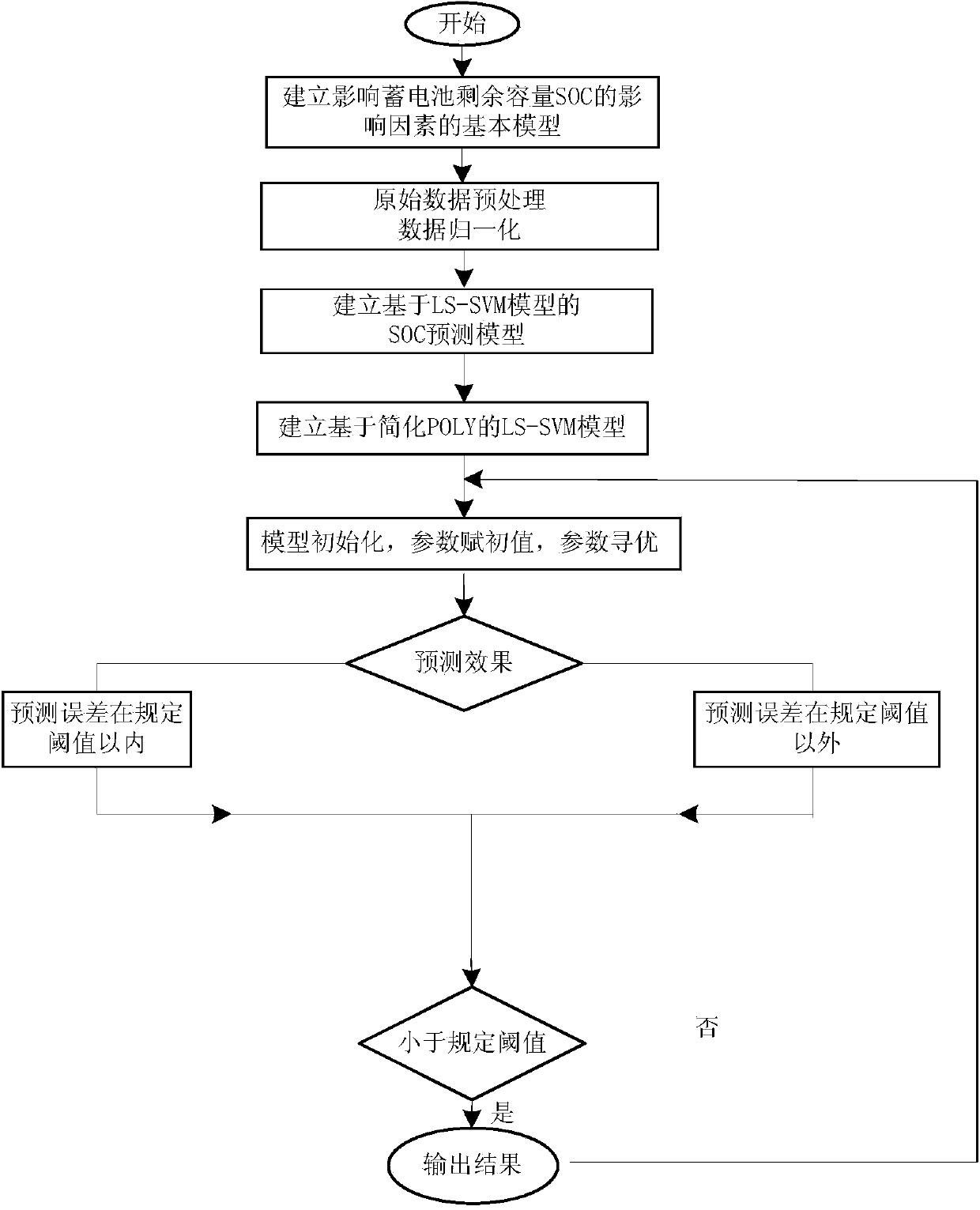Residual battery capacity detection method based on simplified least square support vector machine
A technology of support vector machine and remaining capacity, applied in the field of electric power information, which can solve the problems of slow learning speed, inability to realize online monitoring, long battery rest time, etc.
- Summary
- Abstract
- Description
- Claims
- Application Information
AI Technical Summary
Problems solved by technology
Method used
Image
Examples
Embodiment Construction
[0073] The technical solutions in the embodiments of the present invention will be clearly and completely described and discussed below in conjunction with the accompanying drawings of the present invention. Obviously, what is described here is only a part of the examples of the present invention, not all examples. Based on the present invention All other embodiments obtained by persons of ordinary skill in the art without creative efforts fall within the protection scope of the present invention.
[0074] see figure 1 , a battery residual capacity detection method based on a simplified least squares support vector machine, comprising the following steps:
[0075] Step 1: Establish a basic model of factors affecting the remaining capacity of the battery.
[0076] The remaining power of the battery is a multivariable, strongly coupled, nonlinear system parameter, so the remaining power of the battery cannot be obtained simply by detecting a certain parameter of the battery sys...
PUM
 Login to View More
Login to View More Abstract
Description
Claims
Application Information
 Login to View More
Login to View More - R&D
- Intellectual Property
- Life Sciences
- Materials
- Tech Scout
- Unparalleled Data Quality
- Higher Quality Content
- 60% Fewer Hallucinations
Browse by: Latest US Patents, China's latest patents, Technical Efficacy Thesaurus, Application Domain, Technology Topic, Popular Technical Reports.
© 2025 PatSnap. All rights reserved.Legal|Privacy policy|Modern Slavery Act Transparency Statement|Sitemap|About US| Contact US: help@patsnap.com



